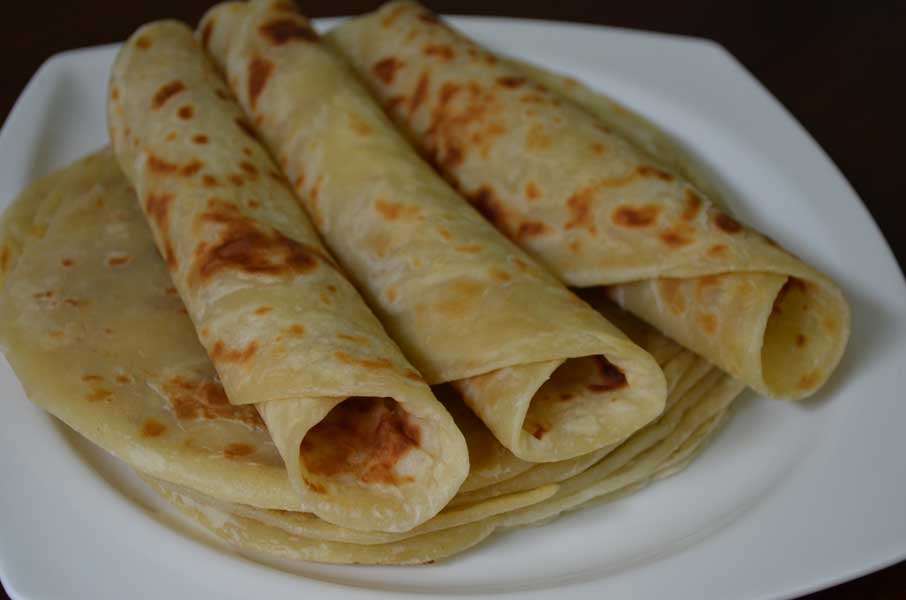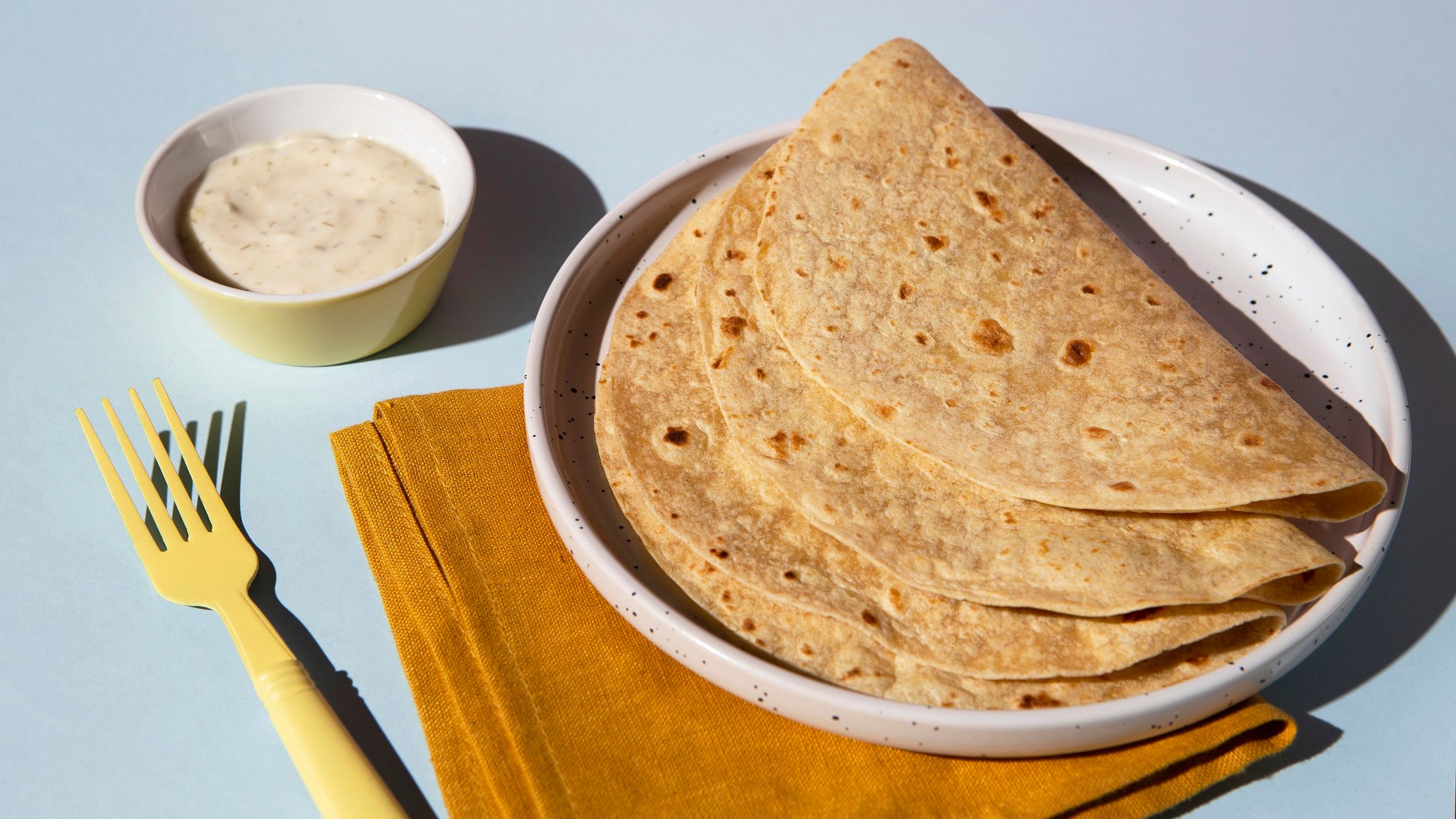Embark on a culinary journey to master the art of crafting soft and thin chapatis, a staple in many cuisines worldwide. These versatile flatbreads are not only delicious but also a canvas for creativity, offering endless possibilities for customization. Join us as we delve into the secrets of achieving the perfect chapati, exploring its history, variations, and serving suggestions.
With its origins deeply rooted in the Indian subcontinent, the chapati has become an integral part of countless meals, transcending cultural boundaries. Its versatility extends from hearty breakfasts to flavorful street food, making it a beloved culinary treasure.
Ingredients
To prepare soft and thin chapatis, you will need the following ingredients:
- 2 cups (250g) of whole wheat flour, plus extra for dusting
- 1 teaspoon (5g) of salt
- 1/2 cup (120ml) of warm water, plus extra if needed
- 1 tablespoon (15ml) of vegetable oil, plus extra for greasing the pan
Variations in quantities:
- For thicker chapatis, use less water.
- For thinner chapatis, use more water.
- For softer chapatis, use more oil.
Steps
To achieve soft and thin chapatis, follow these steps:
Kneading
Combine the flour, salt, and oil in a large bowl. Gradually add water while mixing until a dough forms. Knead the dough for 5-7 minutes until it becomes smooth and elastic. Add more water or flour as needed to achieve the right consistency.
The dough should not be too sticky or too dry.
Resting
Once kneaded, cover the dough with a damp cloth and let it rest for at least 30 minutes. This allows the gluten to relax, making the chapatis softer.
Rolling
Divide the dough into small balls and roll them out into thin circles. Use a rolling pin and apply gentle pressure to achieve an even thickness. If the dough is too dry, sprinkle some water on the surface before rolling.
Cooking
Heat a griddle or skillet over medium heat. Place a rolled-out chapati on the hot surface and cook for 30-60 seconds per side. You can use a spatula to press down on the edges to ensure even cooking. The chapati should puff up slightly and develop golden brown spots.
Tips for Achieving the Desired Texture and Consistency
- Use high-quality flour for better results.
- Knead the dough thoroughly to develop gluten and achieve elasticity.
- Rest the dough to allow the gluten to relax.
- Roll out the chapatis thinly and evenly.
- Cook the chapatis on a hot griddle or skillet.
- Press down on the edges with a spatula to prevent them from curling up.
- If the chapatis are too thick, they will be dense and chewy.
- If the chapatis are too thin, they will be crispy and break easily.
Variations
The versatility of chapati allows for countless variations that cater to different tastes and preferences.
Experimenting with alternative ingredients, fillings, and cooking methods can transform this humble flatbread into a culinary masterpiece.
Alternative Ingredients
- Whole Wheat Flour: For a more nutritious and fiber-rich chapati, substitute all-purpose flour with whole wheat flour.
- Sprouted Wheat Flour: Sprouted wheat flour imparts a nutty flavor and increases the nutritional value of the chapati.
- Multigrain Flour: A blend of different flours, such as wheat, rye, and barley, creates a chapati with a complex flavor and texture.
Fillings and Toppings
- Stuffed Chapati: Fill the chapati with a mixture of vegetables, cheese, or meat before rolling it out.
- Butter and Sugar: Spread a generous amount of butter and sprinkle sugar over the hot chapati for a sweet treat.
- Ghee and Salt: Brush the chapati with ghee and sprinkle salt for a savory and flavorful twist.
Cooking Methods
- Tawa: The traditional method of cooking chapati is on a flat griddle called a tawa.
- Pan: A regular non-stick pan can also be used to cook chapati, but it may not achieve the same level of puffiness as a tawa.
- Electric Chapati Maker: This specialized appliance cooks chapati evenly and quickly, making it a convenient option for large gatherings.
Serving Suggestions
Soft thin chapati offers a versatile canvas for a wide range of culinary creations. Whether as a simple accompaniment or an integral part of a flavorful meal, chapati can elevate any dining experience.
Accompaniments and Dips
The subtle flavor of chapati complements a variety of accompaniments. Consider pairing it with classic Indian dishes such as chana masala, dal makhani, or raita. For a tangy twist, serve with mango pickle or tamarind chutney. Yogurt-based dips like tzatziki or raita also provide a refreshing contrast to the warmth of chapati.
Toppings and Fillings
Chapti’s versatility extends to its ability to accommodate various toppings and fillings. Spread a layer of ghee or butter for a simple yet indulgent enhancement. Sprinkle on chopped cilantro, onions, or grated cheese for added flavor. Alternatively, fill chapati with savory mixtures like spiced potatoes, lentils, or paneer for a hearty meal.
Incorporating Chapati into Meals
Chapati seamlessly integrates into different meals and cuisines. It serves as a perfect bread accompaniment for curries, stews, and grilled meats. In Middle Eastern cuisine, chapati can be used as a wrap for falafel, hummus, or shawarma. In Mexican cuisine, it can replace tortillas in tacos or quesadillas.
The possibilities are endless, allowing chapati to become a culinary chameleon that adapts to diverse culinary traditions.
Troubleshooting
Despite the simplicity of chapati, there are a few common problems that may arise. Here are some troubleshooting tips to help you achieve soft, thin chapati every time.
Dry or Hard Chapati
- Inadequate hydration: Ensure you add enough water to form a soft, pliable dough. Avoid adding too much water, as it can make the dough sticky.
- Overworking the dough: Excessive kneading can develop the gluten, making the chapati tough. Knead only until the dough comes together.
- Insufficient cooking: Cook the chapati on medium heat until it puffs up and develops golden brown spots. Undercooking will result in a raw or doughy chapati.
Chapati Tearing or Breaking
- Improper rolling: Roll the chapati evenly and thinly. Uneven rolling can create weak spots that tear during cooking.
- Too much flour: Dusting the chapati with excessive flour can prevent it from sticking to the pan. Use just enough flour to prevent sticking.
- Uneven heating: Cook the chapati on a hot, evenly heated pan. Cold spots can cause the chapati to tear.
Chapati Sticking to the Pan
- Inadequate greasing: Lightly grease the pan before cooking each chapati. This will prevent sticking.
- Too much dough: Divide the dough into smaller portions and roll out thinner chapati. Oversized chapati are more likely to stick.
- Insufficient heating: Heat the pan thoroughly before adding the chapati. A cold pan will cause the chapati to stick.
Nutritional Information
Chapati is a nutritious flatbread that provides essential nutrients for a healthy diet. One medium-sized chapati (approximately 50 grams) contains:
Calories
120-150
Carbohydrates
25-30 grams
Protein
3-5 grams
Fat
1-2 grams
Fiber
2-3 grams
Macronutrient Breakdown
Chapati is primarily a source of carbohydrates, which provide energy for the body. It also contains a moderate amount of protein, essential for building and repairing tissues. The fat content is minimal, making chapati a low-fat food option.
Vitamins and Minerals
Chapati is a good source of several vitamins and minerals, including:
Iron
Supports red blood cell production and prevents anemia
Magnesium
Plays a crucial role in muscle function, nerve transmission, and bone health
Potassium
Regulates blood pressure and fluid balance
Fiber
Aids in digestion, lowers cholesterol levels, and promotes satiety
Health Benefits
Consuming chapati regularly offers several health benefits:
- Provides sustained energy due to its high carbohydrate content
- Promotes digestive health with its fiber content
- Contributes to weight management as it is low in fat and calories
- May reduce the risk of chronic diseases, such as heart disease and diabetes, due to its fiber and nutrient content
History and Cultural Significance

The history of soft thin chapati is deeply intertwined with the cultural traditions of South Asia, particularly in India, Pakistan, and Bangladesh. Its origins can be traced back to ancient times, with archaeological evidence suggesting that flatbreads similar to chapati were consumed in the Indus Valley Civilization as early as 2600 BCE.
Traditionally, chapati was a staple food for rural communities, providing sustenance and nourishment to farmers and laborers. It was often prepared in large quantities on a griddle or tawa and served with a variety of curries, lentils, and vegetables. Chapati also holds religious significance in Hinduism, where it is considered a pure and sacred food, often offered as part of religious ceremonies and rituals.
Role in Different Cuisines
Beyond its cultural and historical significance, chapati has also played a vital role in different cuisines around the world. In Indian cuisine, it is a ubiquitous accompaniment to almost every meal, from hearty curries to light snacks. In Pakistani cuisine, chapati is often paired with traditional dishes such as Nihari, a rich and flavorful beef stew.
In Bangladeshi cuisine, chapati is known as roti and is commonly served with fish curries and vegetable dishes. It has also found its way into other cuisines, including Caribbean and East African dishes, where it is often used as a substitute for bread or tortillas.
Visuals

Visuals play a crucial role in enhancing the appeal and understanding of the soft thin chapati recipe. A visually appealing table or infographic can effectively summarize the key steps, ingredients, and tips involved in the recipe.
Infographics
An infographic can provide a comprehensive overview of the recipe, including:
- Step-by-step instructions with clear illustrations
- A list of ingredients and their measurements
- Cooking time and serving suggestions
- Nutritional information and calorie count
Illustrations
Illustrations or images can demonstrate the different steps of the cooking process, making it easier for readers to follow the instructions. These images can include:
- Rolling out the dough into a thin chapati
- Cooking the chapati on a hot griddle or tawa
- Serving the chapati with various accompaniments
Photographs
High-quality photographs of the finished chapati can showcase its texture, color, and presentation. These photographs can inspire readers to recreate the recipe and serve it with confidence.
Outcome Summary
Mastering the art of soft and thin chapati making is a rewarding endeavor, bringing joy to both the cook and those who savor its delights. Experiment with different flours, fillings, and accompaniments to create your own unique culinary creations. Whether you’re a seasoned chef or a novice in the kitchen, the satisfaction of crafting the perfect chapati is an experience that will leave you craving more.
Questions and Answers
What is the secret to achieving soft and thin chapatis?
The key lies in the dough’s hydration and kneading technique. Ensure the dough is neither too wet nor too dry, and knead it thoroughly to develop gluten, which gives the chapati its elasticity and softness.
How can I prevent my chapatis from tearing while rolling?
Allow the dough to rest for at least 30 minutes before rolling. This resting period allows the gluten to relax, making the dough more pliable and less prone to tearing.
What is the ideal cooking temperature for chapatis?
Heat a griddle or skillet over medium-high heat. This temperature ensures the chapati cooks evenly without burning.
